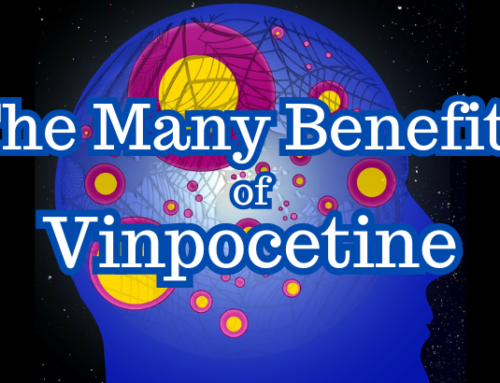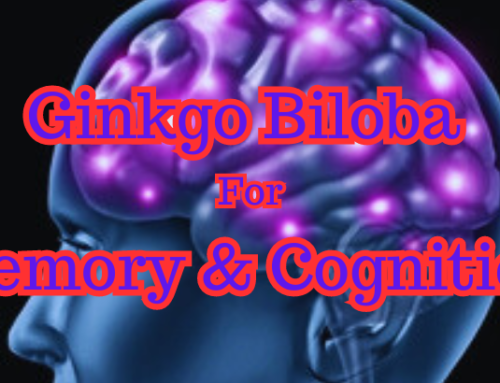Many experienced nootropic users are familiar with at least a few substances in the racetam family. Piracetam, aniracetam, oxiracetam, and phenylpiracetam are all well-known nootropics with a wide variety of purported benefits.
There's a lesser-known racetam that has been getting a lot of attention in the nootropics community over the past few years: fasoracetam. For some people, this fascinating smart drug offers powerful anxiety-reducing and mood-boosting effects in addition to improvements in memory and focus.
In this post, we're gonna take a detailed look at fasoracetam. We'll explore its potential benefits, common dosages used, the best places to buy, possible negative effects, and see what the scientific community has to say about fasoracetam's effectiveness and safety. But first, let's go over what exactly fasoracetam is.
What is fasoracetam?
Fasoracetam (aka NS-105, NFC-1, or 5-0x0-prolinepiperidinamide) is an increasingly-popular nootropic and a member of the racetam family that is also sometimes classified as a research chemical.1 Many people who have used fasoracetam claim it has the ability to improve mood and memory, decrease anxiety, and improve focus.
Unfortunately, there hasn't yet been a lot of research done on fasoracetam, especially compared to some of the other racetams. The research that has been done, however, is very promising.
Over the past decade or so, researchers have taken an interest in fasoracetam as a potential treatment for attention-deficit hyperactivity disorder (ADHD), major depressive disorder (MAD), autism-spectrum disorders (ASD), and other cognitive disorders.2 This isn't surprising given the list of benefits fasoracetam users commonly report.
Although it has yet to be demonstrated in humans, in rat studies fasoracetam has been shown to interact with the neurotransmitters GABA and acetylcholine.3 This explains, at least in part, how fasoracetam might be able to improve memory and decrease anxiety.

Fasoracetam may reduce anxiety while improving memory and focus.
Other animal studies have also shed some light on fasoracetam's anxiety-reducing and mood-boosting effects. One study showed that fasoracetam, when taken daily, can upregulate GABA receptors.4 In other words, it makes the receptors more sensitive. This study found an increased concentration of GABA-B receptors in the cerebral cortex of rats given fasoracetam regularly.
GABA (short for gamma-aminobutyric acid) is the main inhibitory neurotransmitter in humans.5 It's known to play a role in anxiety, mood, arousal, sleep, and a number of other things. If fasoracetam upregulates GABA-B receptors in humans like it does in other animals, this helps to explain its mood-boosting and especially its anxiety-reducing properties.6
Unfortunately, there doesn't seem to be any published human studies that have tested fasoracetam's safety or effectiveness (see Update below for 1 such study). However, it's reasonable to assume that fasoracetam is safe for most people when taken at the recommended dosages for two reasons:
First, fasoracetam has made it to Phase III clinical trials.7 These trials only move on to Phase III after completing the first two, which are designed to test the safety of a drug. If the drug isn't safe, the clinical trial ends. If it is safe, the trial moves into Phase III. So from this we can at least infer that fasoracetam doesn't have the potential for any serious negative effects.
The second reason we can assume fasoracetam is generally safe is that thousands of nootropic users have tried it and no serious negative effects have been reported. There are hundreds of anecdotal reports around the internet of people using fasoracetam – sometimes at high dosages and for extended periods of time – without any ill effects.

Update: A controlled clinical trial in adolescents with ADHD was published in 2018.9 This study was designed to test fasoracetam's effectiveness at treating the symptoms of ADHD as well as its safety. The participants given fasoracetam showed significant improvement on several metrics compared to those given a placebo. And there was no difference in adverse effects between the participants given fasoracetam and the control group. In other words, this study found fasoracetam to be both safe and effective.
Fasoracetam benefits

As mentioned, researchers have only just begun to scratch the surface of fasoracetam's potential as a nootropic. Though a lot more human research still needs to be done, the results of animal experiments have been promising. And hundreds of anecdotal reports from around the world suggest that many of the benefits seen in animals also happen in humans.
Here are just some of the nootropic benefits of fasoracetam that its users have reported:
- Reduced anxiety
- Improved mood
- Increased focus
- Improved memory
- Improved learning
Fasoracetam dosage
![]() There's no consensus on what the best fasoracetam dosage is. Some users report a variety of benefits from as little as 10 milligrams (mg), while others need more than 100 mg to notice fasoracetam's effects.8 Though some effects might be noticeable after a single dose, it usually takes several weeks of twice-daily dosing for the full nootropic benefits of fasoracetam to be realized. In the one published human fasoracetam trial9, dosages went as high as 400 mg twice a day (800 mg/day total). Even at that high dosage no serious negative effects were reported.
There's no consensus on what the best fasoracetam dosage is. Some users report a variety of benefits from as little as 10 milligrams (mg), while others need more than 100 mg to notice fasoracetam's effects.8 Though some effects might be noticeable after a single dose, it usually takes several weeks of twice-daily dosing for the full nootropic benefits of fasoracetam to be realized. In the one published human fasoracetam trial9, dosages went as high as 400 mg twice a day (800 mg/day total). Even at that high dosage no serious negative effects were reported.
Like with any other substance, it's best to start with a low dosage and work your way up as needed. Fasoracetam probably works best when taken on an empty stomach. However, it can be taken with a small meal if taking it on an empty stomach causes nausea. Before starting any new drugs, supplements, plants, exercise programs, or behavioral routines, it's always a good idea to talk to a licensed medical professional, especially if you are on any prescription medications. But since most doctors don't know much about nootropics, you might have to educate yours a bit. The References section at the bottom of the page is a good place to start.
Fasoracetam negative effects
![]() Fasoracetam seems to be extremely safe when taken at reasonable dosages (800 mg/day or less) for short periods of time (< a few months). It's unknown if fasoracetam is safe to take long term (more than a few months), as no long-term studies have been done. However, there are plenty of anecdotal reports of people taking it for many months or even years with no negative effects.
Fasoracetam seems to be extremely safe when taken at reasonable dosages (800 mg/day or less) for short periods of time (< a few months). It's unknown if fasoracetam is safe to take long term (more than a few months), as no long-term studies have been done. However, there are plenty of anecdotal reports of people taking it for many months or even years with no negative effects.
Like the other racetams, fasoracetam may cause minor unwanted effects in some people. These may include things like upset stomach, nausea, headache, and insomnia. If you experience any of these unwanted effects when taking fasoracetam, they should go away shortly after you stop taking it. But the vast majority of people who take fasoracetam don't seem to experience any unwanted effects.
Where to buy fasoracetam

The other trustworthy fasoracetam vendor is Science.bio. They offer fasoracetam as a powder or in liquid form. Like Pure Rawz, Science.bio also has an impressive selection of products. They are of the highest quality, are shipped discreetly, and are reasonably priced. Use the coupon code mike10 at the checkout to save 10% off your order.
Affiliate disclosure: If you place an order with one of these companies after getting there by clicking a link on this page, the Nootropics Zone may get a small commission. The money is used to pay for hosting, the domain name, and the other maintenance costs for this website. That being said, the Nootropics Zone is not being paid directly to promote any particular companies or products and all information/reviews on this site are as honest and accurate as possible.
Conclusion
 Fasoracetam is a fascinating nootropic with a novel mechanism of action (relative to the other racetams). It has the potential to produce powerful anti-anxiety and anti-depressant effects in some people, in addition to improved memory and increased focus. And fasoracetam seems to generally be very safe.
Fasoracetam is a fascinating nootropic with a novel mechanism of action (relative to the other racetams). It has the potential to produce powerful anti-anxiety and anti-depressant effects in some people, in addition to improved memory and increased focus. And fasoracetam seems to generally be very safe.
As more research is done to illuminate fasoracetam's nootropic properties, the more likely this lesser-known racetam is to grow in popularity. Many highly-experienced nootropic users rank fasoracetam amongst the most potent of brain boosters. For some, it has even become their go-to nootropic.
Have you used fasoracetam? If so, what has your experience been like? Did you find it to have an effect on your mood or anxiety levels? Leave your answer in the comments section at the bottom of the page. And if you haven't already, sign up for the Nootropics Zone newsletter below to learn about dozens of brain-boosting smart drugs.
To learn more about nootropics, sign up for the Nootropics Zone newsletter. You'll get the free gift, The Ultimate Nootropics Quick Reference Guide.
References
1Shorvon, S. (2001). Pyrrolidone derivatives. Lancet, 358(9296):1885-92.
2Drug profile: fasoracetam. (2017). Retrieved on March 1, 2024 from http://adisinsight.springer.com/drugs/800003134
3Ogasawara, T., Itoh, Y., Tamura, M., Mushiroi, T., Ukai, Y., Kise, M., & Kimura, K. (1999). Involvement of cholinergic and GABAergic systems in the reversal of memory disruption by NS-105, a cognition enhancer. Pharmacology, Biochemistry and Behavior, 61(1):41-52.
4Shimidzu, T., Itoh, Y., Oka, M., Ishima, T., Ukai, Y., Yoshikuni, Y., & Kimura, K. (1997). Effect of a novel cognition enhancer NS-105 on learned helplessness in rats: possible involvement of GABA(B) receptor up-regulation after repeated treatment. European Journal of Pharmacology, 338(3):225-32.
5Gamma-aminobutyric acid. (n.d.). Wikipedia. Retrieved March 1, 2024 from https://en.wikipedia.org/wiki/Gamma-Aminobutyric_acid
6Ulrich, D. & Bettler, B. (2007). GABAB receptors: synaptic function and mechanisms of diversity. Current Opinion in Neurobiology, 17:298-303.
7ClinicalTrials.gov. (2017). Efficacy and safety of NFC-1 in adolescents with genetic disorders impacting mGluR and ADHD. Retrieved June 10, 2017 from https://clinicaltrials.gov/ct2/show/study/NCT02777931
8Fasoracetam dose? (2016). Retrieved on June 13, 2017 from https://www.reddit.com/r/Nootropics/comments/44ijip/fasoracetam_dose/
9Elia, J., Ungal, G., Kao, C., et al. (2018). Fasoracetam in adolescents with ADHD and glutamatergic gene network variants disrupting mGluR neurotransmitter signaling. Nature Communications, 9(1):4
[This article was originally published June 16, 2017. Updated March 1, 2024.]







Leave a Reply